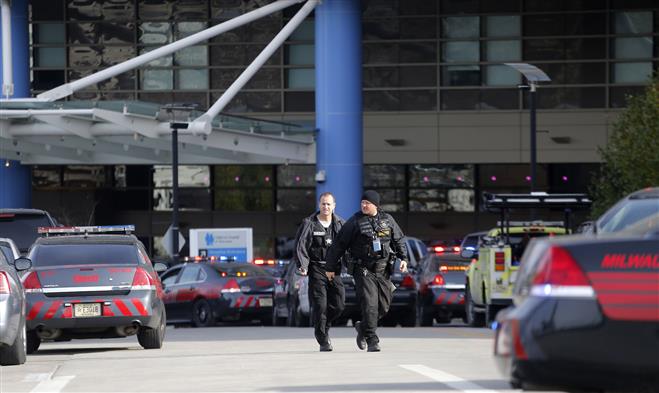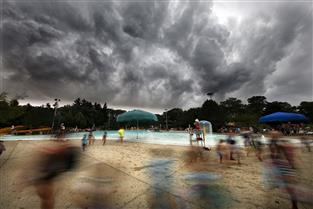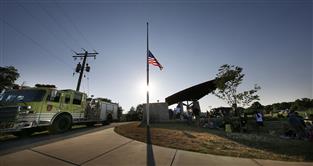Children's Hospital incident ends in relief
The shooting at Children's Hospital of Wisconsin last Thursday ended with only one injury, and a Tosa police department training program might share some of the credit for that outcome.
Ashanti Hendricks of Milwaukee, who appeared in court Tuesday, was arrested after being shot in the hand by an officer during an active-shooter confrontation at the hospital.
Hendricks was approached by two Milwaukee Police officers Nov. 14 in the neonatal ward of the hospital after a woman called and said he was armed and was wanted on a warrant for being a felon in possession of a handgun. Hendricks at first seemed to cooperate with police, but then tried to escape and brandished his gun, according to a criminal complaint filed in Milwaukee County Circuit Court. An officer shot him, injuring his hand before Hendricks surrendered.
He is charged with two counts of bail jumping and possessing a gun as a felon, all felonies, and resisting or obstructing an officer, a misdemeanor.
The incident, which attracted a small army of law enforcement personnel, drew attention to preparedness for a public institution.
Children's Hospital Chief Medical Officer Michael Gutzeit credited the hospital's security plan and recent active shooting training in what he called an effective response by employees of the hospital.
While he wouldn't discuss the Children's case, Wauwatosa Police Capt. Tim Sharpee said the department offers workplace security and active-shooter response training to businesses and public buildings. City Hall employees, for example, have had training, he said.
"We have a course that we teach that is consistent with what the Department of Homeland Security teaches, which is the run-hide-fight," he said. "We also have gone out and partnered with the private sector and done some of the same types of instruction with them as well, in the same course, with the run-hide-fight, how to respond if there's a workplace violence issue, and what to expect from law enforcement and the fire service when they respond."
Sharpee said the program was free and viewed as part of the department's community partnership.
Run, fight and hide
The run-hide-fight protocol is a Department of Homeland Security recommendation. It is described in detail at dhs.gov/active-shooter-preparedness.
"If there is an act of violence in a workplace, if you can evacuate, or run, they want you to run and get out of the building safely, and then find a position of cover, and then call 9-1-1," Sharpee said. "If you can't get out of the building, then we want people to hide in shelter in place, so that they find the best hiding place, they barricade themselves in, they're quiet, they notify 9-1-1 and give as much information as they can."
In a worst-case scenario, when a person is confronted with somebody who is committing acts of violence with a weapon of any kind, even just a bat, "it is time to fight back."
Sharpee said it's important not to confuse this with a robbery situation.
"If I'm being robbed by somebody individually — somebody comes to me, they're gonna take my car, they want my wallet, even as a police officer, I am going to give them the $20 in my pocket if I'm lucky to have it, and let them go on their way, and I'll be a professional witness. I'm not going to put myself or my family in danger by trying to take action."
But an active shooter situation is different.
"We have seen throughout this country that the time to negotiate and submit doesn't work well. People are being killed. There's no time to, just, say, plead for your life, because it doesn't work. In essence, the fight portion of it is absolute the last piece of that puzzle," he said. "We want you out of the building, we want you hiding if you can hide, but if there is the very last-case scenario, this person is coming to assault you and cause you harm, you need to fight for your life, because there is no other option."
While the Milwaukee County Grounds in Wauwatosa are formally under the protection of the Sheriff's Office, the police department patrols the County Parks and responds to calls in them because, in most cases, the police are closer to the situation.
Also, It is not uncommon for an outside agency to serve a warrant in a neighboring community.
More from News and Features
- Anodyne Coffee plans to open location in Wauwatosa Village
- Wauwatosa Meetings: Aug. 4
- Video: Wauwatosa girl's curbside ice cream stand raises money for the hungry
- Wauwatosa News and Notes: Hands-only CPR training offered; Firefly Art Fair is Aug. 6-7
- Wauwatosa Ask Now: Why are there barriers and fencing along the North Avenue bridges over the Menomonee River?
- Mystery Photo Contest: July 28
- Wauwatosa gears up for National Night Out event, this year at the zoo
- Election 2016: Wisconsin's 4th District candidates weigh in
- Wauwatosa's Luther Manor residents share smiles through flower delivery
- Wauwatosa Police Report: July 17-23















